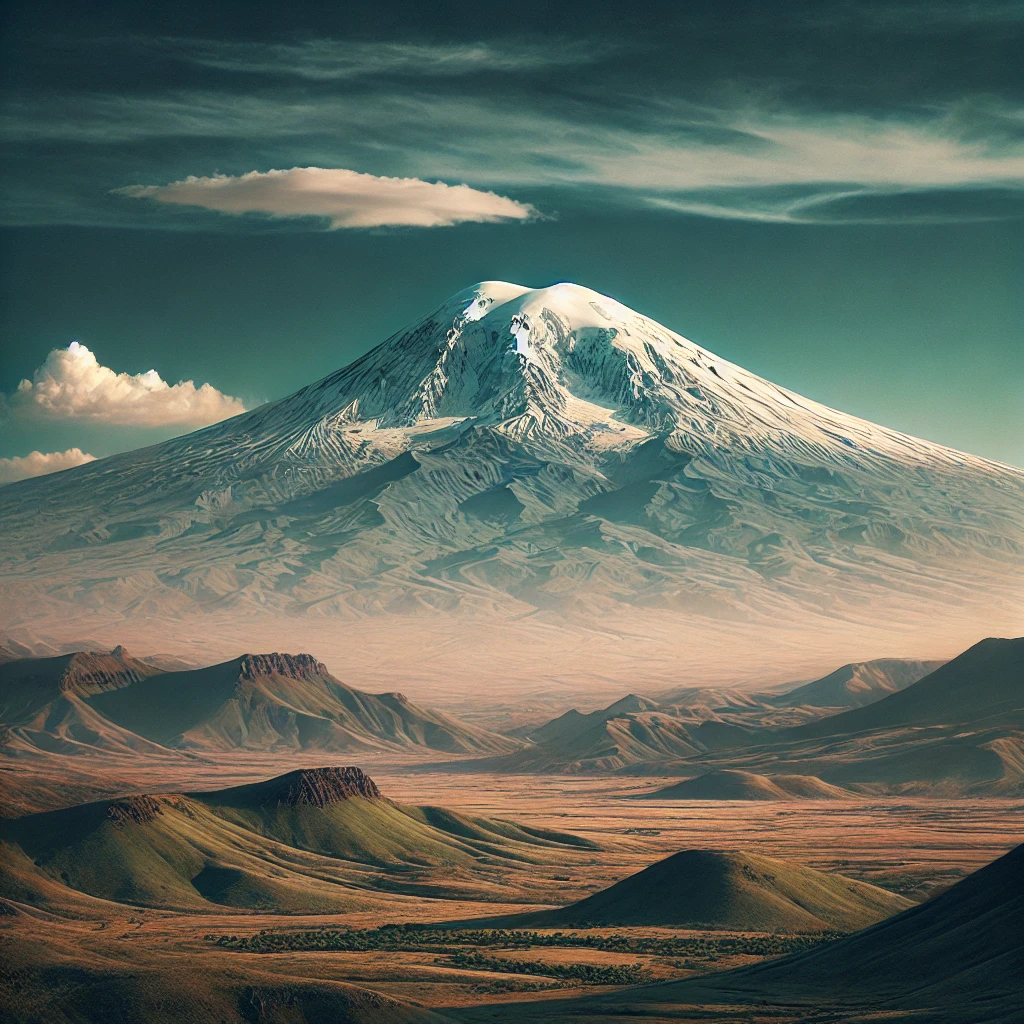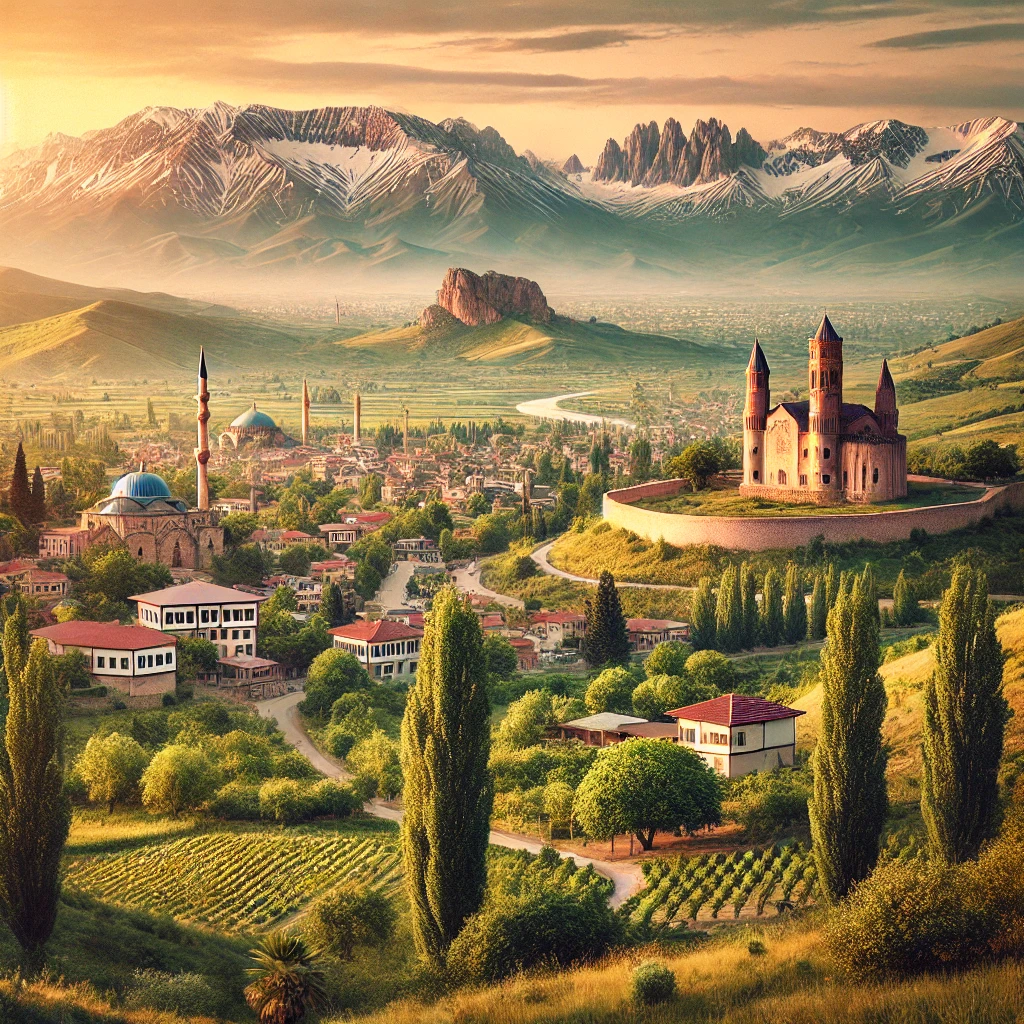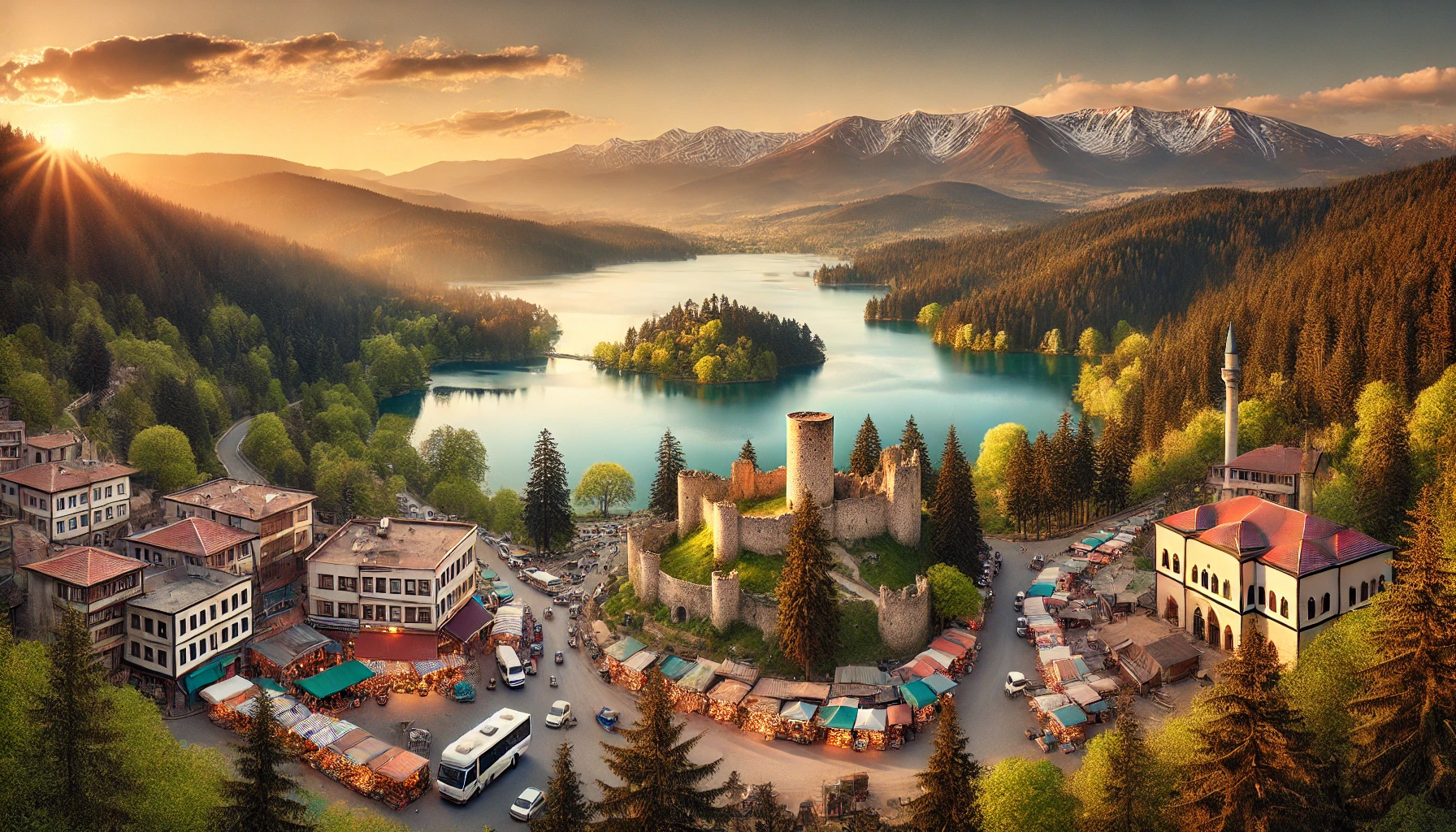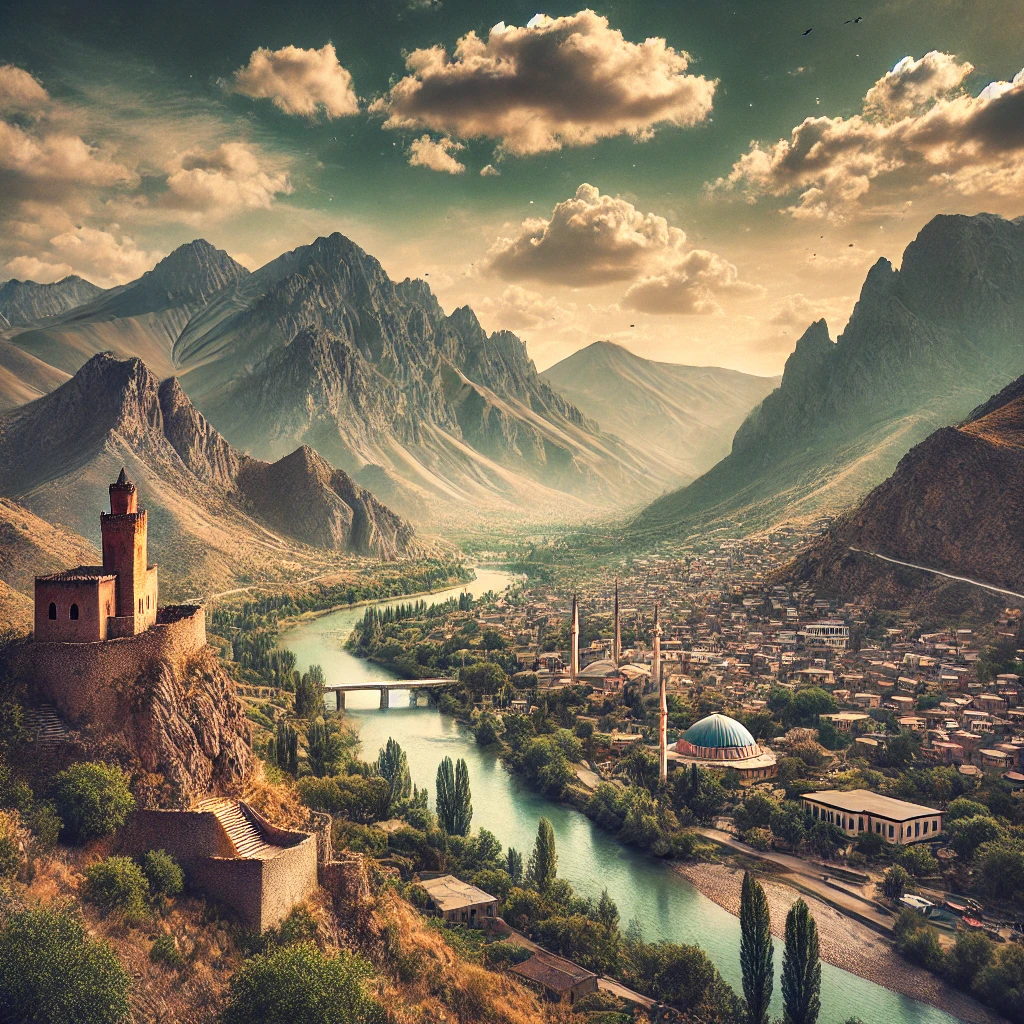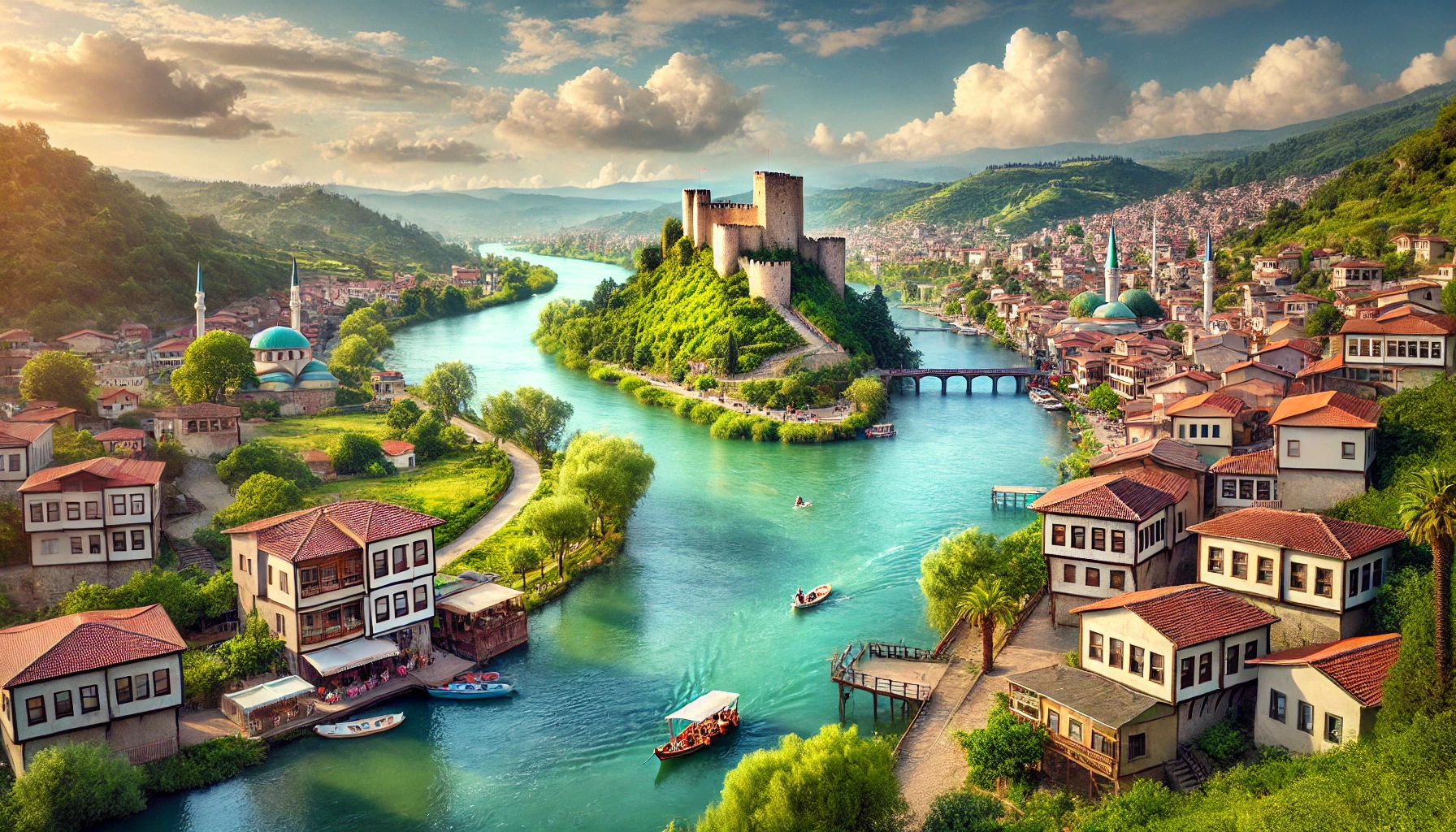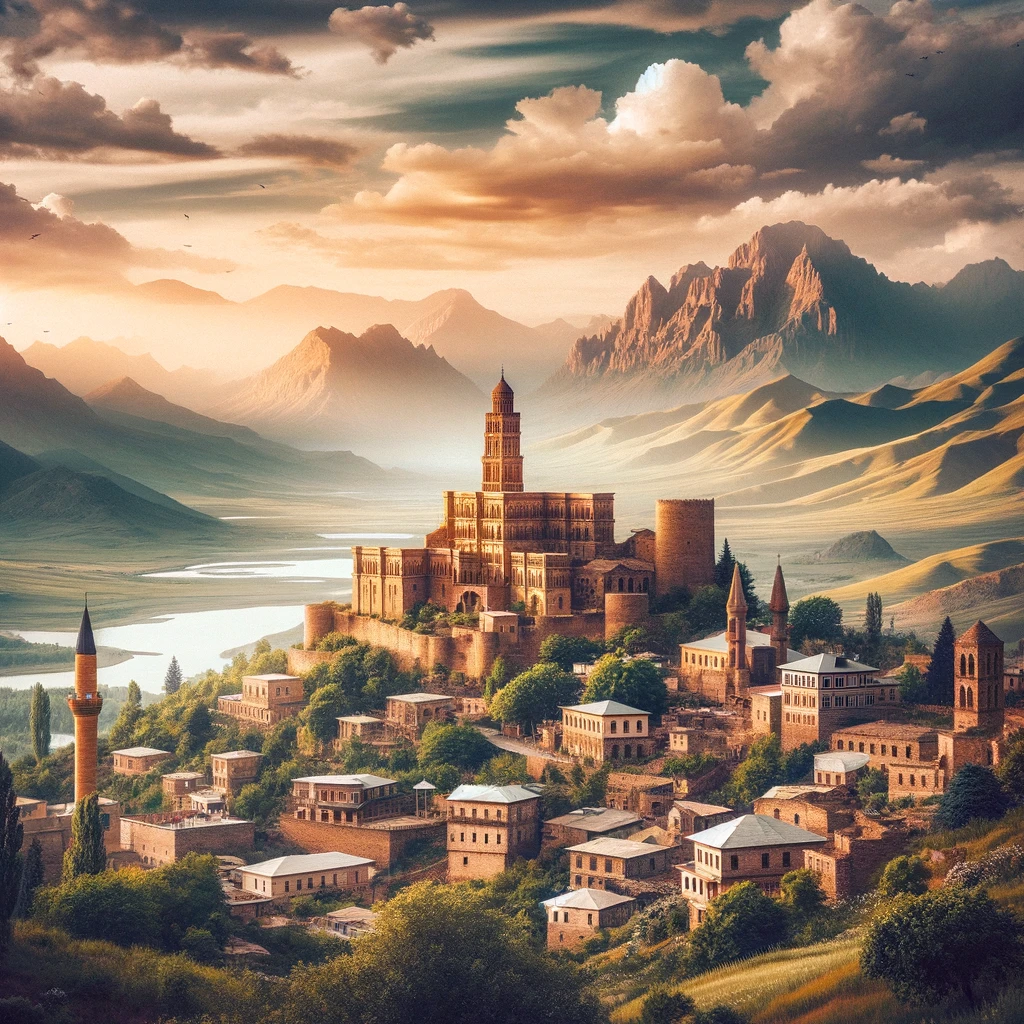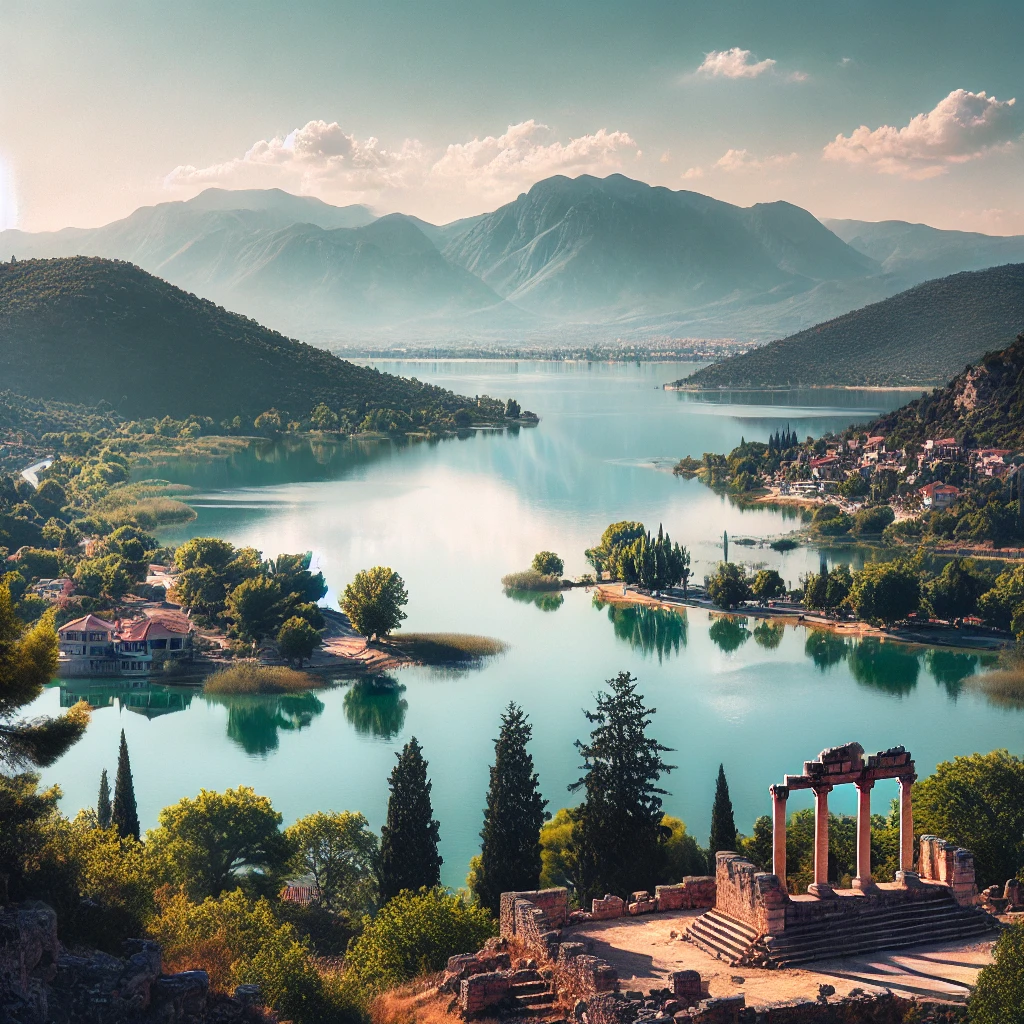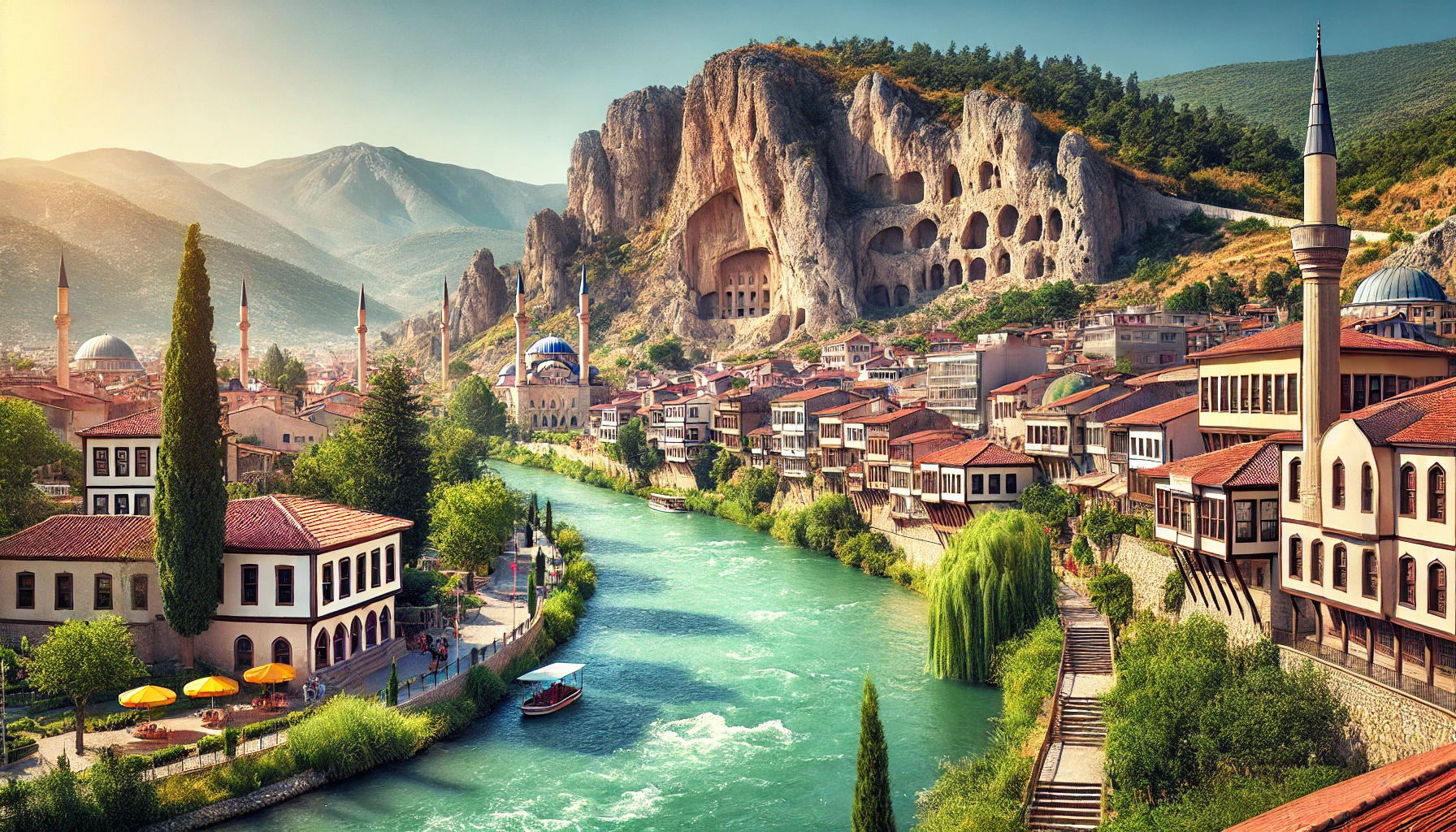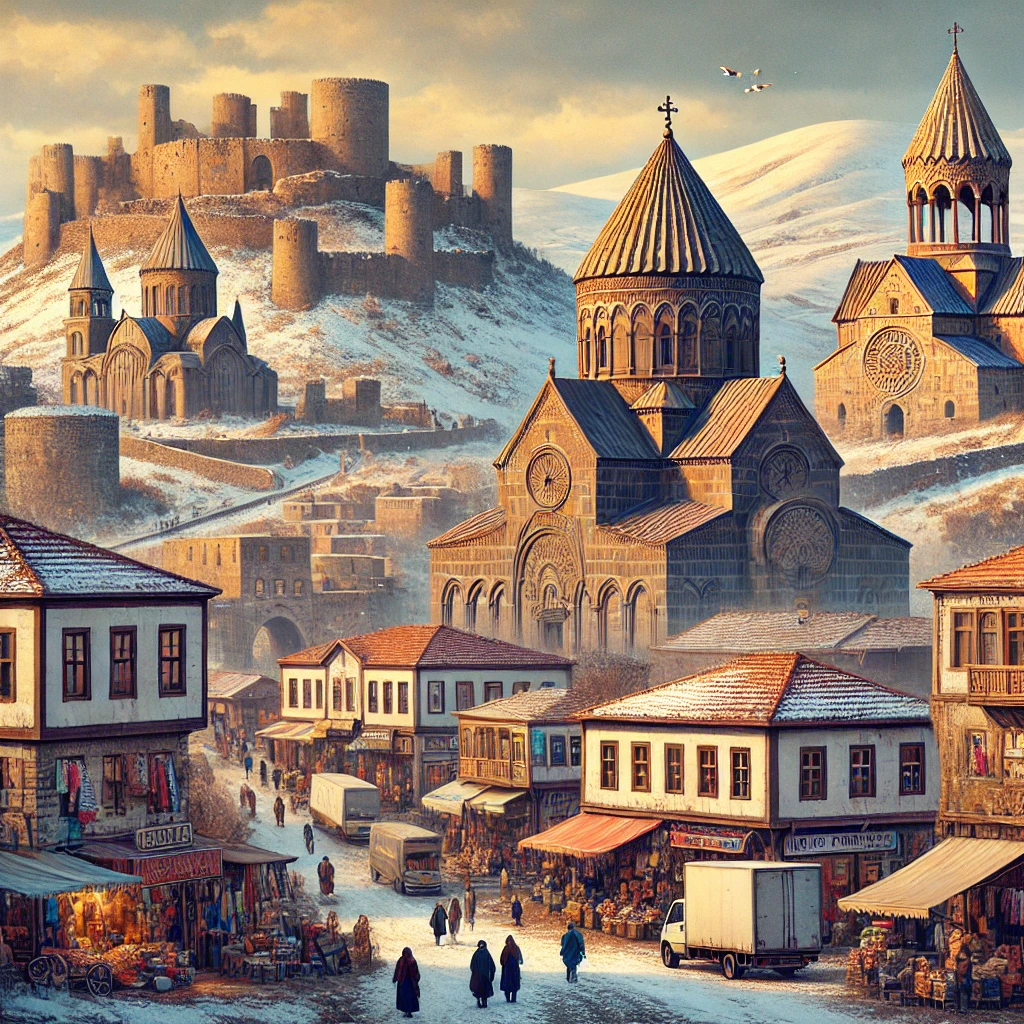The Myth and Reality of Noah's Ark on Mount Ararat
Mount Ararat, towering at an impressive height of 5,137 meters (16,854 feet), stands as a snow-capped sentinel in Eastern Turkey, a region rich in history and myth. Known as Ağrı Dağı in Turkish, this dormant volcanic massif is not just a geographical marvel but also a symbol of cultural significance and religious lore. Often associated with the biblical story of Noah’s Ark, Mount Ararat holds a unique place in the hearts of people across different nations and religions. This article explores the multifaceted significance of Mount Ararat, delving into its geological features, historical importance, cultural connections, and the allure it holds for travelers and adventurers alike.
The Geological Grandeur of Mount Ararat
The Formation and Structure of Ararat
Mount Ararat is a compound stratovolcano formed over millions of years through tectonic activity. It comprises two major volcanic cones: Greater Ararat and Little Ararat. Greater Ararat, the taller of the two, rises to 5,137 meters (16,854 feet), making it the highest peak in Turkey. Little Ararat, standing at 3,896 meters (12,782 feet), is a notable presence in its own right, contributing to the mountain’s iconic silhouette.
The volcanic origins of Mount Ararat date back to the Miocene epoch, about 10 million years ago, during a period of significant tectonic activity in the region. The mountain’s geological composition includes a mix of basaltic, andesitic, and rhyolitic lavas, along with pyroclastic deposits, giving it a complex and varied structure. Over the millennia, the mountain has seen several phases of volcanic activity, with the most recent eruption recorded in the 19th century.
The Shrinking Ice Cap
One of the most striking features of Mount Ararat is its ice cap, which has been shrinking rapidly due to climate change. The ice cap, which once covered a vast area, has diminished significantly over the past few decades. In the 1950s, the ice cap was approximately 10 square kilometers (3.9 square miles) in size, but by 2011, it had shrunk to just 5.7 square kilometers (2.2 square miles). This reduction has not only altered the mountain’s appearance but also raised concerns about the long-term sustainability of its glacial environment.
The Historical and Cultural Significance of Mount Ararat
A Mountain Steeped in Mythology
Mount Ararat has long been associated with the biblical story of Noah’s Ark. According to the Book of Genesis, Noah’s Ark came to rest “on the mountains of Ararat” after the great flood. While the exact location of the Ark remains a subject of debate, Mount Ararat has traditionally been considered the most likely resting place. This association has made the mountain a site of pilgrimage and spiritual significance for many, particularly within the Christian and Jewish faiths.
In Armenian tradition, Mount Ararat is regarded as a sacred mountain. Despite lying outside the borders of modern Armenia, it is a national symbol, often depicted in Armenian art, literature, and the country’s coat of arms. The mountain represents the heart of the Armenian homeland, and its image is a poignant reminder of the nation’s history and cultural identity.
The Political Borders and Ararat’s Role in Regional History
Mount Ararat’s location near the borders of Turkey, Armenia, Iran, and the Nakhchivan exclave of Azerbaijan makes it a significant geographical landmark in the region. Historically, the mountain has been at the crossroads of various empires and civilizations. During the 16th century, the range formed part of the Ottoman-Persian border. In the early 19th century, after the Russo-Persian War, the area came under Russian control before being ceded to Turkey in the 20th century.
The mountain also played a role in the Kurdish Ararat Rebellion of the 1920s, where Kurdish rebels used its rugged terrain as a refuge against Turkish forces. The rebellion and subsequent territorial adjustments further solidified Mount Ararat’s place in the complex geopolitical history of the region.
Exploring Mount Ararat: A Destination for Adventurers
Climbing the Summit: Challenges and Rewards
For mountaineers and adventure enthusiasts, Mount Ararat presents a challenging yet rewarding climb. The ascent to the summit of Greater Ararat is not for the faint-hearted, requiring both physical endurance and technical skill. Climbers typically take three to four days to reach the summit, starting from the town of Doğubayazıt, which serves as the base for expeditions.
The journey to the top takes adventurers through diverse landscapes, from lush meadows at the base to rocky terrains and finally, the icy slopes near the summit. The final ascent is often the most challenging, with steep inclines and thin air testing even the most seasoned climbers. However, those who reach the summit are rewarded with breathtaking views that extend across the borders of Turkey, Iran, Armenia, and Azerbaijan.
Nearby Attractions: Beyond the Mountain
While Mount Ararat is undoubtedly the main attraction, the surrounding region offers several other sites of interest for travelers. The town of Doğubayazıt is home to the stunning Ishak Pasha Palace, an Ottoman-era fortress that combines elements of Persian, Armenian, and Ottoman architecture. The palace, perched on a hill overlooking the plains, offers a glimpse into the region’s rich history and cultural diversity.
Another nearby attraction is the ancient city of Ani, located near the Turkish-Armenian border. Once a thriving medieval metropolis, Ani is now an archaeological site, with the ruins of churches, fortresses, and city walls telling the story of its past glory. The city’s location on the Silk Road made it a vital trade hub, and its architectural heritage reflects the various cultures that passed through it.
The Symbolism of Mount Ararat in Armenian Culture
Ararat as a National Symbol
For Armenians, Mount Ararat is more than just a mountain; it is a symbol of national identity and cultural heritage. The mountain’s image is ubiquitous in Armenia, appearing on everything from postage stamps to brandy labels. It is also a recurring motif in Armenian literature and poetry, often symbolizing the resilience and endurance of the Armenian people.
The mountain’s prominence in Armenian culture is further highlighted by its depiction on the coat of arms of Armenia. Despite being located within Turkish territory, Ararat remains a potent symbol of the Armenian homeland, a reminder of the nation’s historical ties to the region.
The Mountain of Noah’s Ark
The association of Mount Ararat with Noah’s Ark has also influenced Armenian religious traditions. The Armenian Apostolic Church, one of the oldest Christian denominations in the world, holds the mountain in high regard. According to Armenian legend, Noah’s descendants settled in the Ararat plain, establishing the roots of the Armenian nation. This connection to the biblical story of creation gives Mount Ararat a special place in Armenian spiritual life.
The Environmental and Climatic Challenges of Mount Ararat
The Impact of Climate Change
Like many of the world’s glaciers, the ice cap on Mount Ararat has been significantly affected by climate change. The retreat of the ice cap has accelerated in recent decades, raising concerns about the long-term environmental impact. The shrinking glaciers not only affect the mountain’s appearance but also have broader implications for the region’s water supply and ecosystem.
Efforts to monitor and study the changes in Ararat’s ice cap have highlighted the urgent need for conservation measures. As global temperatures continue to rise, the future of Mount Ararat’s glaciers remains uncertain, making it a focal point for climate researchers and environmentalists.
Conservation and Preservation Efforts
In response to the environmental challenges facing Mount Ararat, various conservation initiatives have been proposed. These efforts aim to protect the mountain’s unique ecosystem while also preserving its cultural and historical significance. One such initiative involves promoting sustainable tourism, encouraging visitors to respect the natural environment and cultural heritage of the region.
Local communities and international organizations are also working together to raise awareness about the impact of climate change on Mount Ararat. By fostering a greater understanding of the mountain’s environmental importance, these efforts seek to ensure that future generations can continue to enjoy and appreciate this majestic peak.
Conclusion
Mount Ararat stands as a symbol of both natural beauty and cultural significance, a towering presence that has captured the imagination of people for centuries. Whether viewed through the lens of geology, history, or mythology, the mountain offers a rich tapestry of stories and experiences. For travelers and adventurers, it presents a challenging but rewarding journey, while for Armenians and many others, it remains a powerful symbol of identity and heritage.
As the world grapples with the challenges of climate change, the preservation of Mount Ararat’s unique environment has become increasingly important. By understanding and appreciating the mountain’s significance, we can ensure that it continues to inspire and captivate for generations to come.
For more detailed information and travel tips, visit the Travel Guide of Türkiye.
Latest Update: Aug 19, 2024
Your Content Goes Here
TAGS: Ararat, Ararat ascent, Ararat conservation, Ararat expedition, Ararat glaciers, Ararat ice cap, Ararat myth, Ararat national symbol, Ararat preservation, Ararat tourism, Armenian Apostolic Church, Armenian coat of arms, Armenian culture, Armenian diaspora, Armenian genocide, Armenian heritage, Armenian history, Armenian homeland, Armenian literature, Armenian mythology, Armenian pilgrimage, Armenian poetry, Armenian spirituality, Armenian symbolism, climate change, Doğubayazıt, Eastern Turkey, geological history, Greater Ararat, Ishak Pasha Palace, Kurdish Ararat Rebellion, Little Ararat, Mount Ararat, Noah's Ark, Noah's Ark landing, stratovolcano, sustainable tourism, Turkish geography, volcanic activity
A brief summary of the key points in this article.
Latest Travel Guides
Weather Today in Mount Ararat, Turkey
Location: Ağrı Province
Temperature: -9.9°C
Condition: Broken clouds

